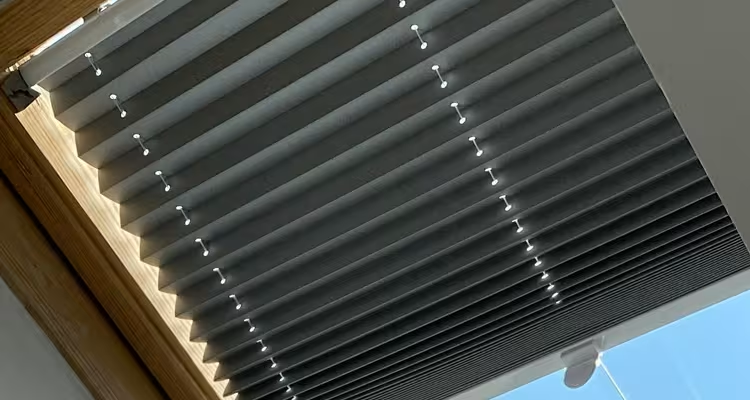Skylights and roof windows present unique challenges that require specialised blind solutions designed to operate on angled or horizontal planes whilst managing intense overhead light and heat. Skylight blinds are engineered specifically for these demanding applications, offering reliable operation, effective light control, and enhanced thermal performance where standard window treatments simply won't work.
Unlike vertical windows, skylights must overcome gravity when raising blinds and prevent sagging when lowered. Purpose-designed skylight blinds incorporate tensioned systems with side rails or guide wires that keep fabric taut and enable smooth operation regardless of angle. Many utilise spring-assisted mechanisms or electric motors, as manual pole operation becomes impractical for high or hard-to-reach installations.
Popular Skylight Blind Types
Roller skylight blinds with side rails that guide fabric smoothly whilst preventing light gaps
Pleated skylight shades offering cellular construction for excellent insulation against heat loss and solar gain
Venetian-style skylight blinds providing adjustable slat control, though less common due to mechanical complexity
Blackout skylight blinds eliminating all light for bedrooms where morning sun would otherwise disrupt sleep
Heat Management
Heat management is paramount with skylights, which can become sources of excessive solar heat gain. Reflective or thermal-backed skylight blinds can reduce heat by up to 80%, preventing uncomfortable temperature spikes in loft conversions and rooms with roof glazing.
Light control
addresses the intensity of overhead sun, which can create harsh lighting conditions and screen glare. Adjustable blinds allow you to enjoy natural light without overwhelming brightness.
Privacy considerations
apply to skylights overlooked by neighbouring buildings or located in urban areas where roof terraces might provide views into your space.




 Don't just take our word our high standard of work, feel free to read our clients testimonials too...
Don't just take our word our high standard of work, feel free to read our clients testimonials too...